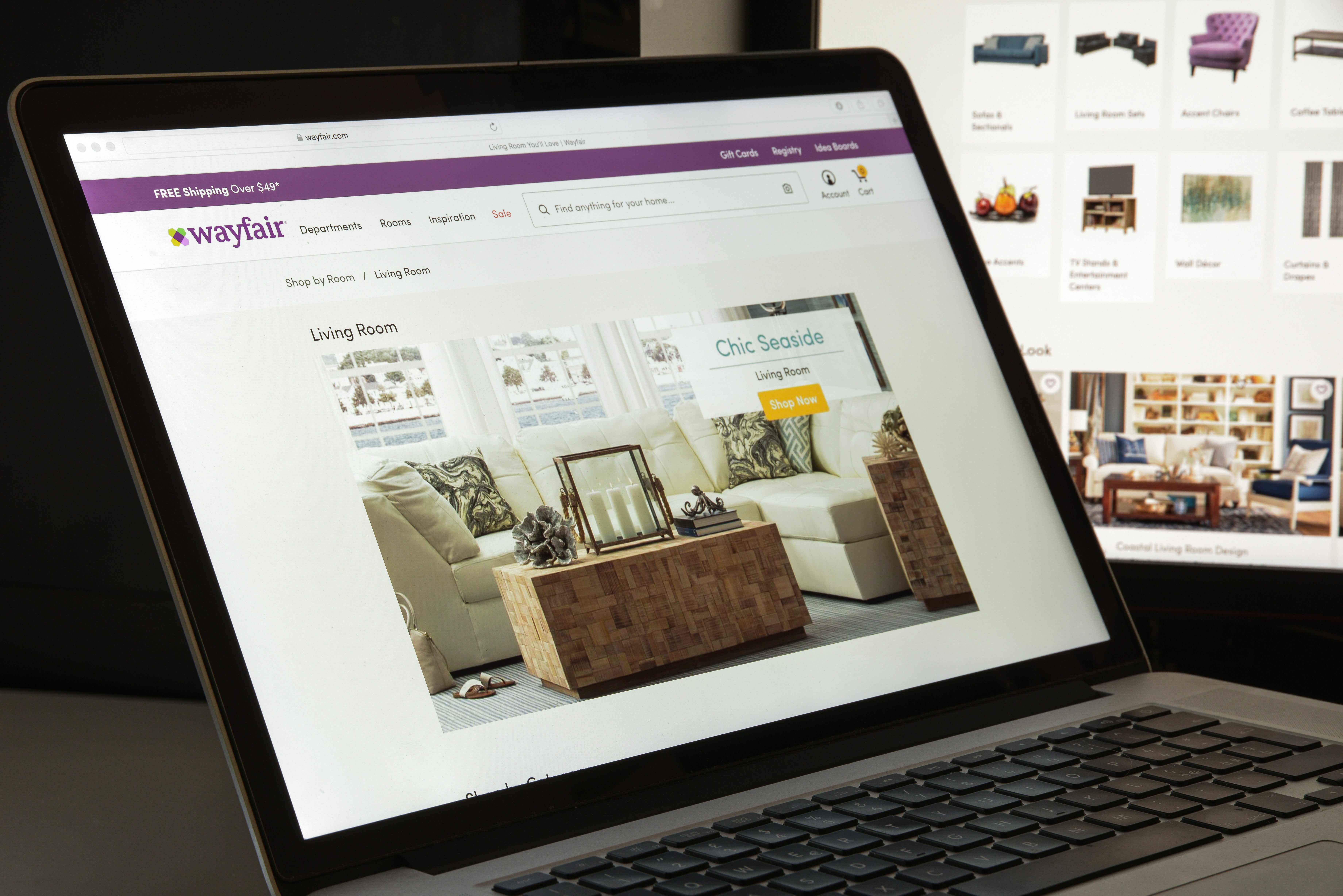Imagine that you are the CEO of an online home goods retailer. A genie grants you three wishes. First, you wish that your brick-and-mortar rivals are all forced to close; second, that your biggest online competitor, Amazon, shifts its focus away from your market, prioritizing the delivery of essential products rather than products like furniture and lighting; and finally, that your potential customers are all forced to stay indoors, where they realize the shortcomings of their home environments—not just that uncomfortable sofa, but also the poor reading lamp that stands beside it.
What would happen next? Perhaps you would acquire 5 million new customers in just three months, something that normally took you a year to achieve? Or perhaps your revenues would balloon by nearly 84 percent, to more than $4 billion. Or maybe you’d finally turn your first quarterly profit since your company went public in 2014.
There’s no genie, but the rest of the story isn’t a stretch of the imagination—it was Wayfair’s second quarter. Even the company’s long-rumored quarterly profit magically appeared, to the tune of $274 million.
Despite the pandemic and all its restrictions, Wayfair fulfilled nearly 19 million orders in the second quarter, a 106 percent increase from the same quarter a year ago. To keep up with that demand, the company announced on its earnings call last week that it is in the process of onboarding 1,000 new customer service workers.
It’s easy to imagine the phones are ringing off the hook at Wayfair headquarters; as orders poured in, the e-commerce giant saw its fair share of shipping delays. Still, head count has often been a cost-control problem there in the past—in February of this year, the company acknowledged as much in an announcement that it was cutting 550 jobs—so one might be leery of hearing that number starting to climb again, especially when there is little reason to believe next quarter’s sales numbers are going to be as strong.
And therein lies the challenge for Wayfair: How do you model for the future when you’ve just had the strongest quarter in your company’s history, knowing it might be your best for years to come? If it took a pandemic and a nearly 90 percent jump in sales to finally turn a profit, what will it now take to remain profitable? Holding on to as many of those 5 million new customers as possible would seem on the surface to be a good place to start, but are they the customers that are going to really grow the company’s profitability?
Wayfair’s investor presentation data reveals that its customer has an average household income of $75,000 a year, and 45 percent of the company’s sales come from customers between the ages of 31 and 50—an economically sensitive demographic, as we have been reminded in recent months.
Despite the significant uptick in orders, the company’s average order value declined this year, from $255 in the second quarter of last year down to $227. When you analyze those numbers—and put them together with the fact that the company’s advertising spending rose 40 percent in the past three months—to $417 million—it’s clear that the company continues to spend more than 10 percent of its revenue to continually bring in what would appear to be a relatively low-margin customer. It’s hardly a recipe for long-term profitability.
What Wayfair seems to be counting on most is that the pandemic will prove to be the great accelerator—that it will speed up the world’s adoption of technology and comfort with e-commerce sites, leaving us less eager to return to brick-and-mortar furniture stores and showrooms, even when we can. In that line of thinking, Wayfair is onto something.
The company saw more than 60 percent of its sales in the past three months come from its mobile platform or through its app. That is a huge number. What makes it more remarkable is that it came at a time when most Americans were working from home—and yet they still chose to shop from their phones, perhaps because it’s easy, or for many even feels enjoyable. It’s a trend with potential staying power: The longer we continue to shop online for our everyday needs, avoiding the seemingly scary in-person retail experience, the more business will stay online forever. We won’t go back.
Wall Street has bought into this theory in a huge way, which is why it has sent the company’s shares soaring to all-time highs. Closing at over $300 a share on Friday, Wayfair’s market capitalization now exceeds that of the Ford Motor Company. And to all the to-the-trade brands that say their customers don’t want to shop online or purchase from their phones: Ignore the message coming from Wayfair at your peril.
____________
Dennis Scully is the host of the weekly BOH podcast, where he explores the changes and challenges facing the interior design community through interviews with industry thought leaders, entrepreneurs and creatives. Scully was previously a business development consultant for major trade brands, and has held sales and marketing roles at Domino, Waterworks and Twill Textiles. In his Market Watch columns, Scully calls upon his background as an analyst and longtime securities trader as he explores the ins and outs of the home industry’s publicly traded businesses.
Disclaimer: The author did not hold shares of the companies featured in this column at the time of the story’s publication. The views, thoughts and opinions expressed here belong solely to the author, and do not necessarily reflect those of BOH. The material is for informational purposes only, and does not constitute any form of financial advice.
Homepage photo: Shutterstock.com





























